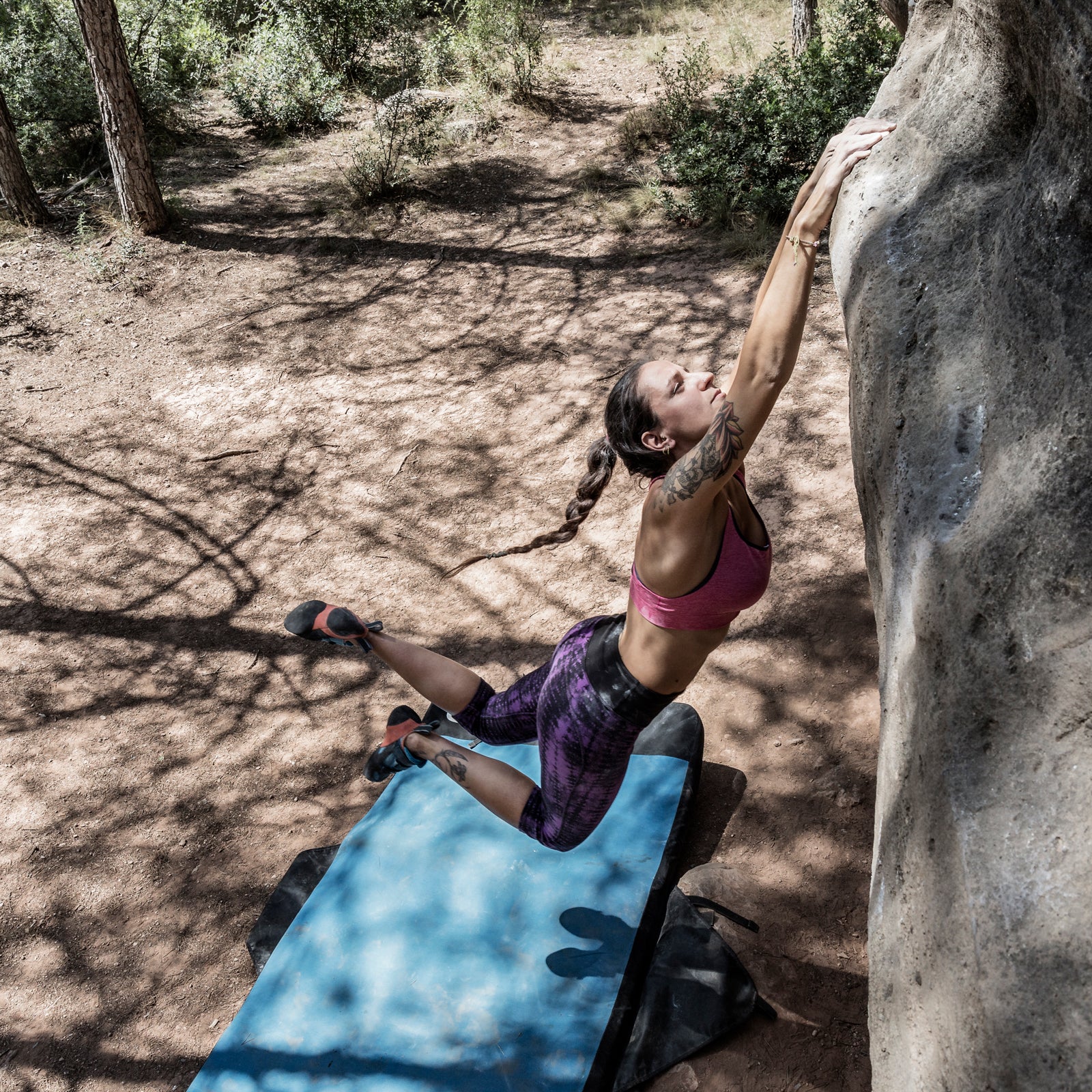Bone-dry palms that give way to stiff calluses. Ultra-short nails and shredded cuticles. Bandages locked down with superglue. A professional climber’s grip can’t just be strong, it has to be tough enough to withstand hold after hold while sustaining countless scrapes, gashes, cracks, and blisters along the way.
“Skin is so, so important,” says Sam Elias, a 32-year-old climber who has conquered M12+ and W16 winter routes and took second place at the 2010 Ouray Ice Climbing Competition. “When your skin is good, you don’t feel like you’re slipping as much. And more than anything, you can bear down on really small, sharp holds without pain taking your mind away and keeping you from trying as hard as you want to.”
For climbers, “good” means tough skin that’s dried out and sweat-free, with perfectly honed calluses. “Any moisture detracts from the friction against the rock, and soft skin has a tendency to rip or tear easily,” says Alex Johnson, 25, two-time World Cup gold medalist and the first woman to ascend a V12 in Colorado. “It’s pretty funny when you have a hot tub full of climbers, everyone sits with their hands sticking out of the water.”
It sounds simple, but there’s a fine line between skin that’s strong and skin that’s so thickened and parched it cracks and blisters. Whether you’re a climber or just plain hard on your hands, use these strategies and essentials from Elias and Johnson to start getting the most from your skin.
Keep It Clean
When dust and grit abound, cleanliness is crucial for preventing irritation and infection. “Some people will wash their hands multiple times throughout a climbing day to get the dirt, chalk, and aluminum from the gear off their hands and start fresh,” Elias says. “But wash them as quickly after climbing as possible.”
And for the inevitable scrapes and gashes: “I’ll immediately apply Neosporin,” Johnson says. Since Band-Aids and tape are tricky to keep on, climbers often add superglue. “Put it down the sides of your finger and then wrap the tape around so it’s glued to your skin. Works pretty well!” Post-climb, swap out bandages frequently: they’re a breeding ground for germs.
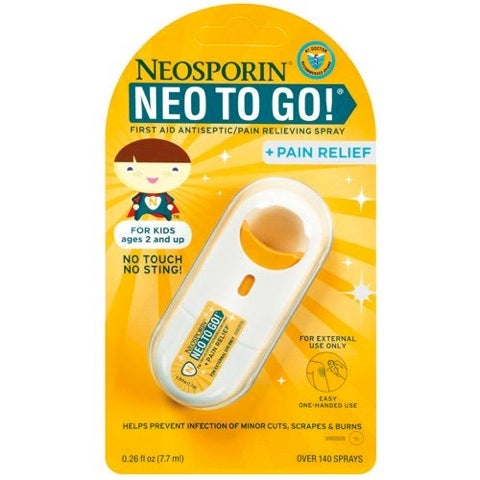
Neosporin + Pain Relief Neo to Go ($7)
The durable spray bottle is designed to use one-handed (no tiny cap to drop and lose forever) and the dose of makes it that much easier to get back in the game.
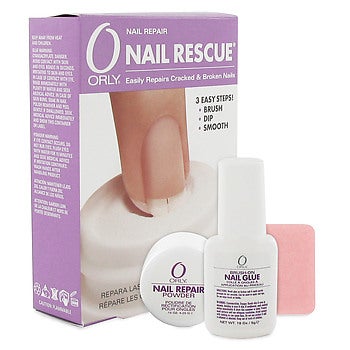
Orly Nail Rescue ($8)
For epically broken nails, this beats bandages by a mile. Just dab a little of the non-stinging glue on the damaged area, dip it into the pot of microfine acrylic (think powdered fake nails), then smooth down the edges. It’ll stay clean and protect against additional damage from bumps and snags for about a week.
Study Smart
If you keep tabs on whether your hands tend to be dry or sweaty, and whether they’re more prone to cracking or shredding, you can pick the right products to dial skin in the right direction. “When I started climbing,” Elias says, “I used a lot of lotion, which I really shouldn’t do because my skin is wet and soft already.” The best way to determine what your skin needs—or doesn’t need—is to compare notes. “The most illuminating thing was talking with other climbers at the gym,” Elias says. “That’s really how I learned what good skin looks like.”
That said, the fastest way to derail good skin is to take it fast and furious with hardcore products. Case in point: Antihydral, an extra-strength, over-the-counter antiperspirant from Europe. Elias currently uses it once or twice a week on his palms and fingertips to shut down sweat glands and thicken skin, but it’s a regimen he spent years developing. “With Antihydral, your skin can easily crack—deep, deep cracks that take a long time to heal,” he says. No matter how far your skin has to go, consider extra-strength products a last resort or you risk taking yourself out of the game for a month of recovery.
The smartest approach to any new product is to start with a small amount applied just where you need it, and give it a week or two before ramping it up. For sweatiness, if pure climbing chalk isn’t cutting it, try one that’s formulated with an extra drying agent. For crack-prone skin, use a lightweight cream packed with plant oils like jojoba and sunflower, which absorb into skin and nourish instead of sitting on top and trapping moisture.
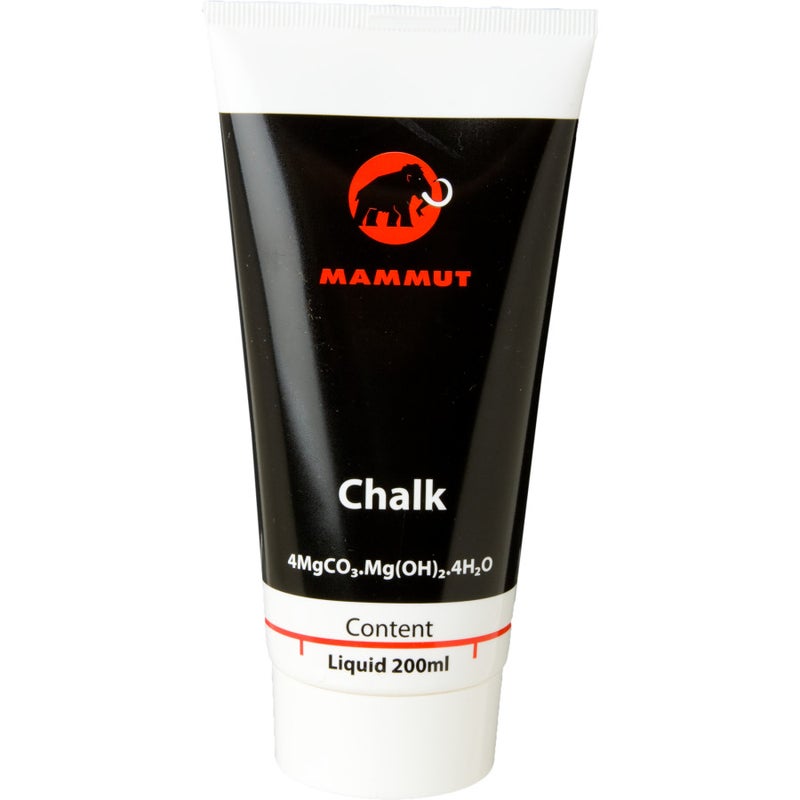
Mammut Liquid Chalk ($13)
Magnesium carbonate, the go-to chalk for climbers, is suspended in alcohol to dry out moist skin. Magnesium hydroxide, also known as milk of magnesia, works as an antiperspirant to hold off new sweat. Apply sparingly on finger pads and palms to avoid over drying.
Repair and Prevent
Armor only goes so far if you don’t take care of what’s underneath. Muscle-recovery TLC is also good for skin, calming inflammation and jump-starting the healing process so new layers of skin come out strong. “I’ll soak my hands in a bucket of ice water, and then cover my hands, fingers, and joints in arnica lotion from one of my sponsors, Joshua Tree Skin Care,” Johnson says.
But since skin is constantly growing, it’s important to know when to say goodbye to some of those tough layers to prevent cracks and blisters. “If calluses build up too much, or if they’re not even, the thicker skin will tear the thinner skin next to it. So it’s important to file them so your skin isn’t pulling on itself.” Elias’s tool of choice: “Sandpaper. It sounds weird, I know.” Try a fine-grade one (at least 200 grit) to avoid taking off too much at once.
Johnson likes to use sandpaper to prevent peeling bits of skin from tearing deeper. “Sanding down those loose pieces with a small sheet of sandpaper will prevent them from getting stuck on a rock and pulling off, resulting in a deep, bloody flapper.” Though when it comes to the more delicate cuticle skin, skip the grit—as well as nail clippers, paper scissors, and your teeth—and use a pair of purpose-made scissors. Nothing else cuts as close or as clean.
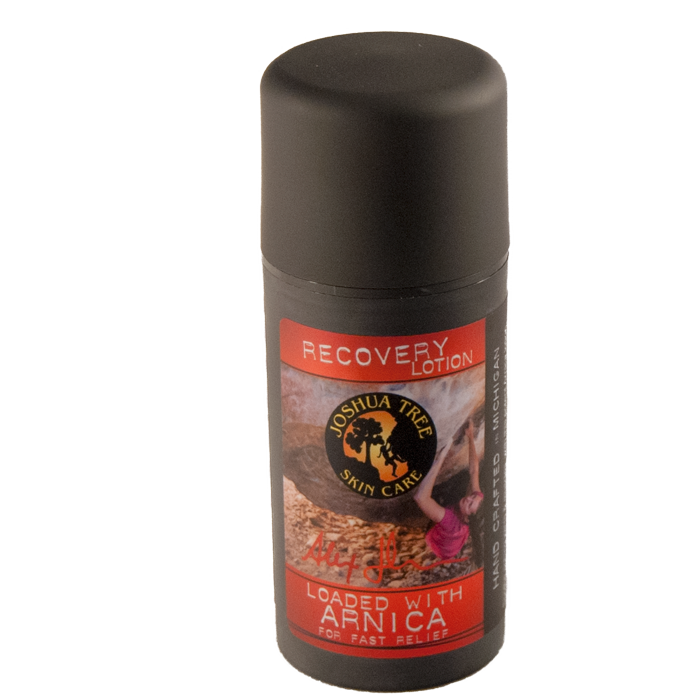
Joshua Tree After Sport Recovery Lotion ($25)
Sore hands get a cool-down, thanks to the analgesic eucalyptus oil, antiseptic and antibacterial tea tree oil, and anti-inflammatory arnica in . Sunflower and coconut oils penetrate and nourish, while beeswax, cocoa butter, and shea butter seal and protect outer layers while they heal.
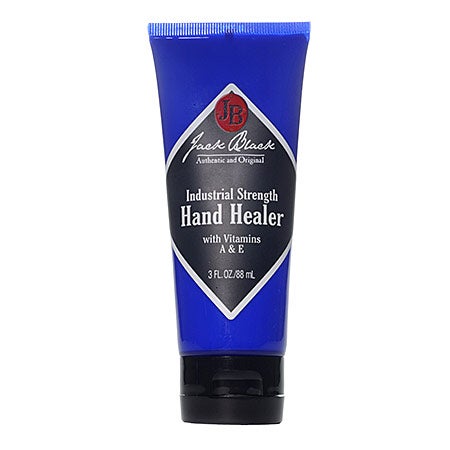
Jack Black Industrial Strength Hand Healer ($15)
Once cuts, scrapes, and gashes are on the mend, is tops for finishing the job. Glycerin draws moisture to prevent healing tissue from drying out, while a slew of plant oils smooth chapped skin.
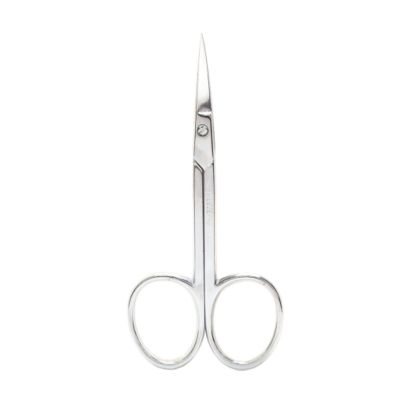
Tweezerman Stainless Steel Cuticle Scissors ($20)
are the ultimate in precision, eliminating peeling skin and hangnails at the source. One caution: they’re perfect for eliminating snaggy skin around the rim of the nail, but don’t get carried away or you’ll leave the nail bed vulnerable to infection.
Climb On
With ever changing factors like sun, wind, temperature, and humidity at play, the most meticulous skin prep can’t guarantee performance. “You learn that you can only do so much,” Elias says. “You stack the cards in your favor with your skincare, like you do with everything else, and you do the best you can.”
“My cuticles tend to split and bleed,” Johnson adds, “usually when I’m gripping a hold so small that it bends my knuckles back. There’s not much I can do to prevent that from happening, because I’m not going to stop trying hard. If you’re putting your time, effort and soul into something, it becomes expected to bleed at least a little.”


